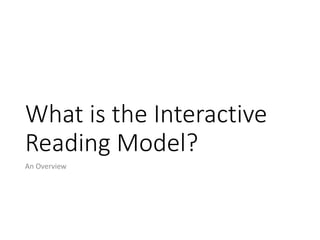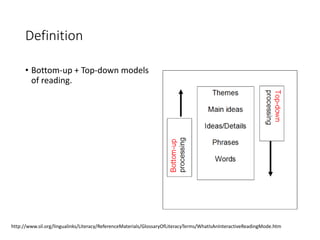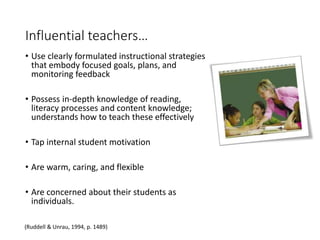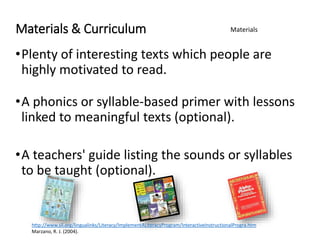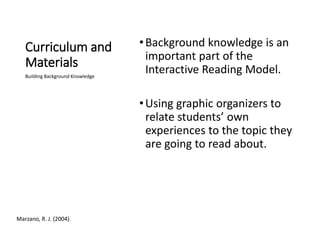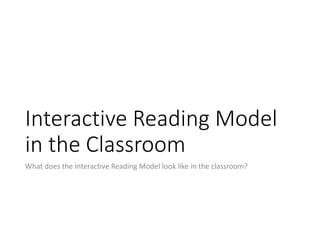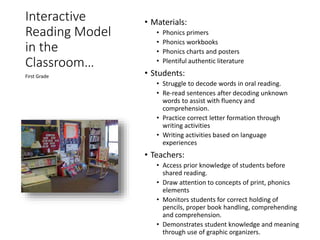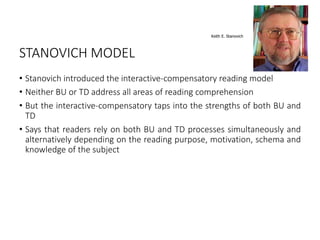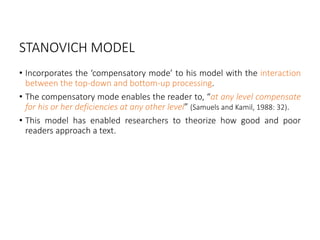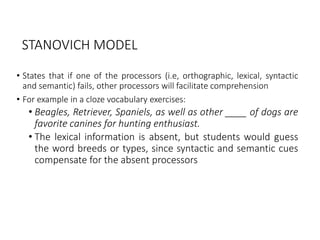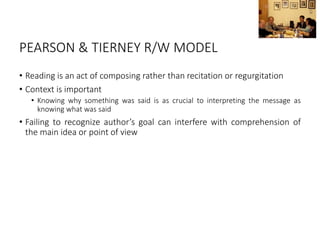The Interactive Reading Model is an approach that incorporates both bottom-up and top-down reading processes. It focuses on student motivation and interest in reading material. A key belief is that students are more likely to understand and retain knowledge from texts they are interested in reading. The model also emphasizes the teacher's role in selecting interesting texts and facilitating student choice over reading topics. In the classroom, the Interactive Reading Model involves the use of leveled texts, literacy circles, writing workshops, and other collaborative activities to develop students' reading comprehension skills.
